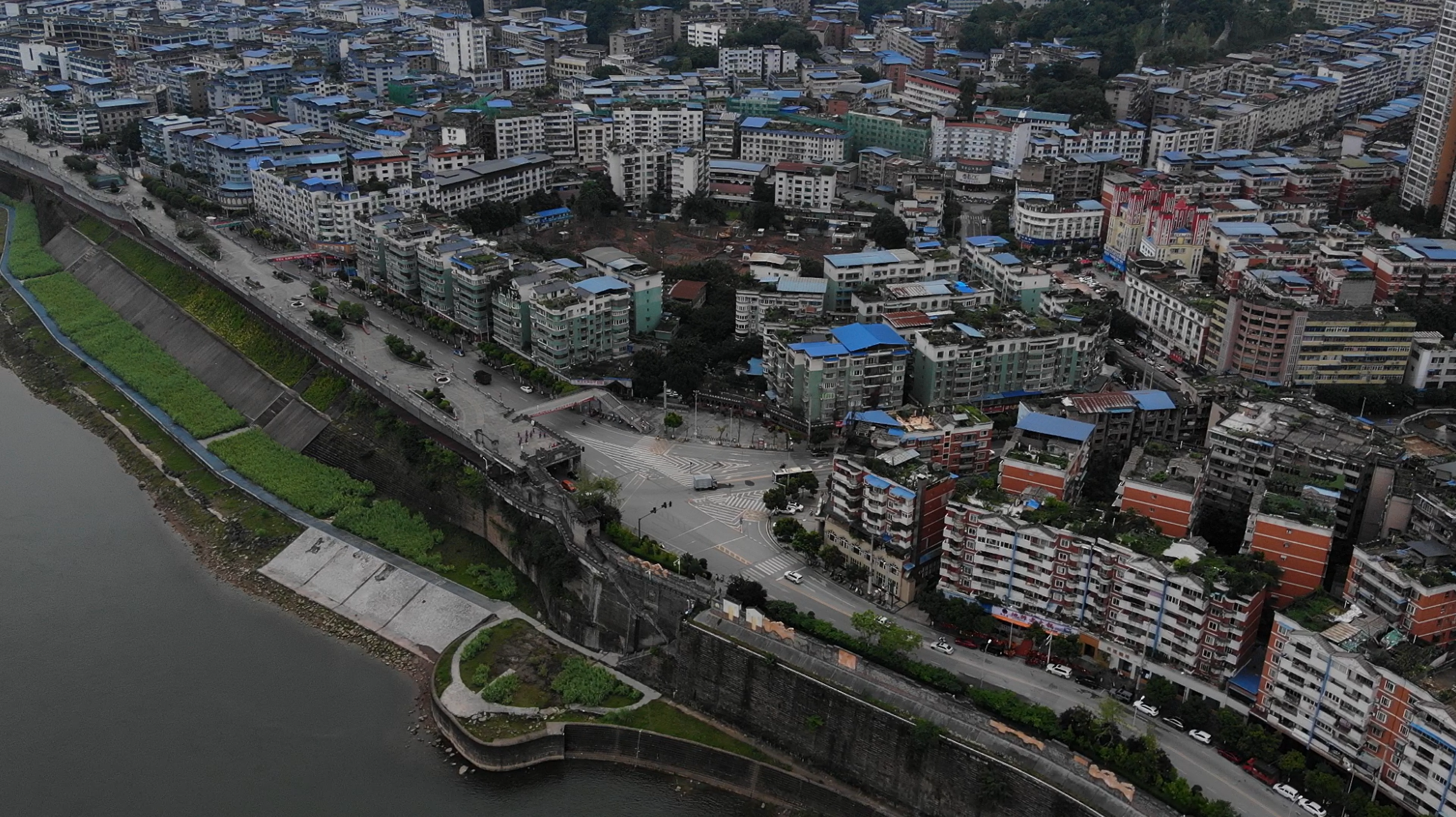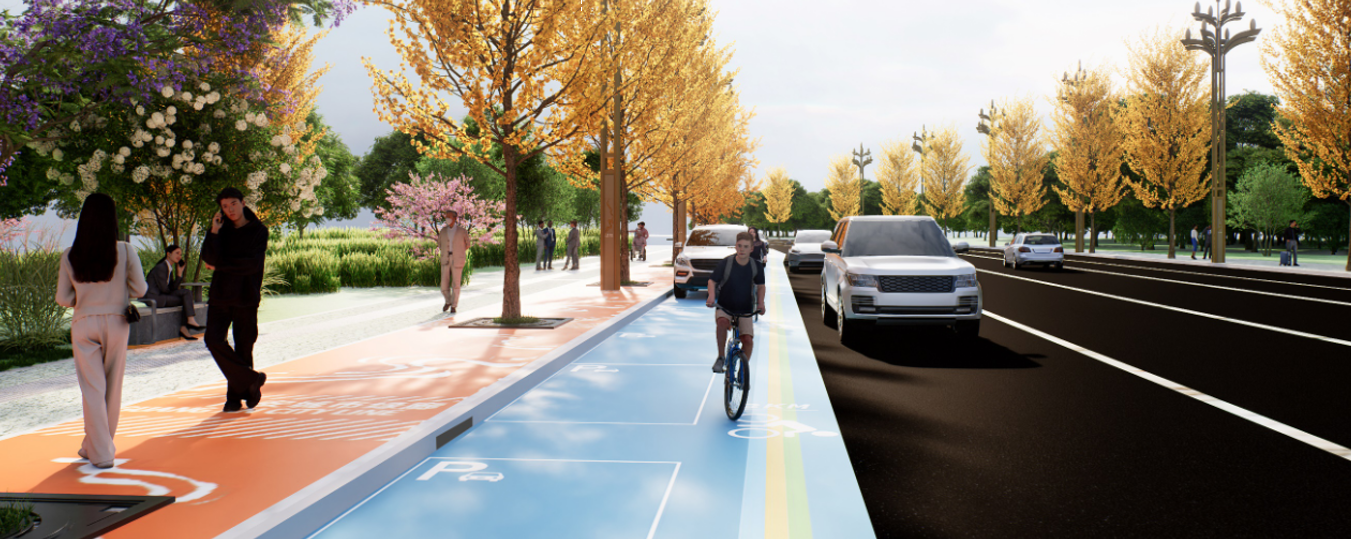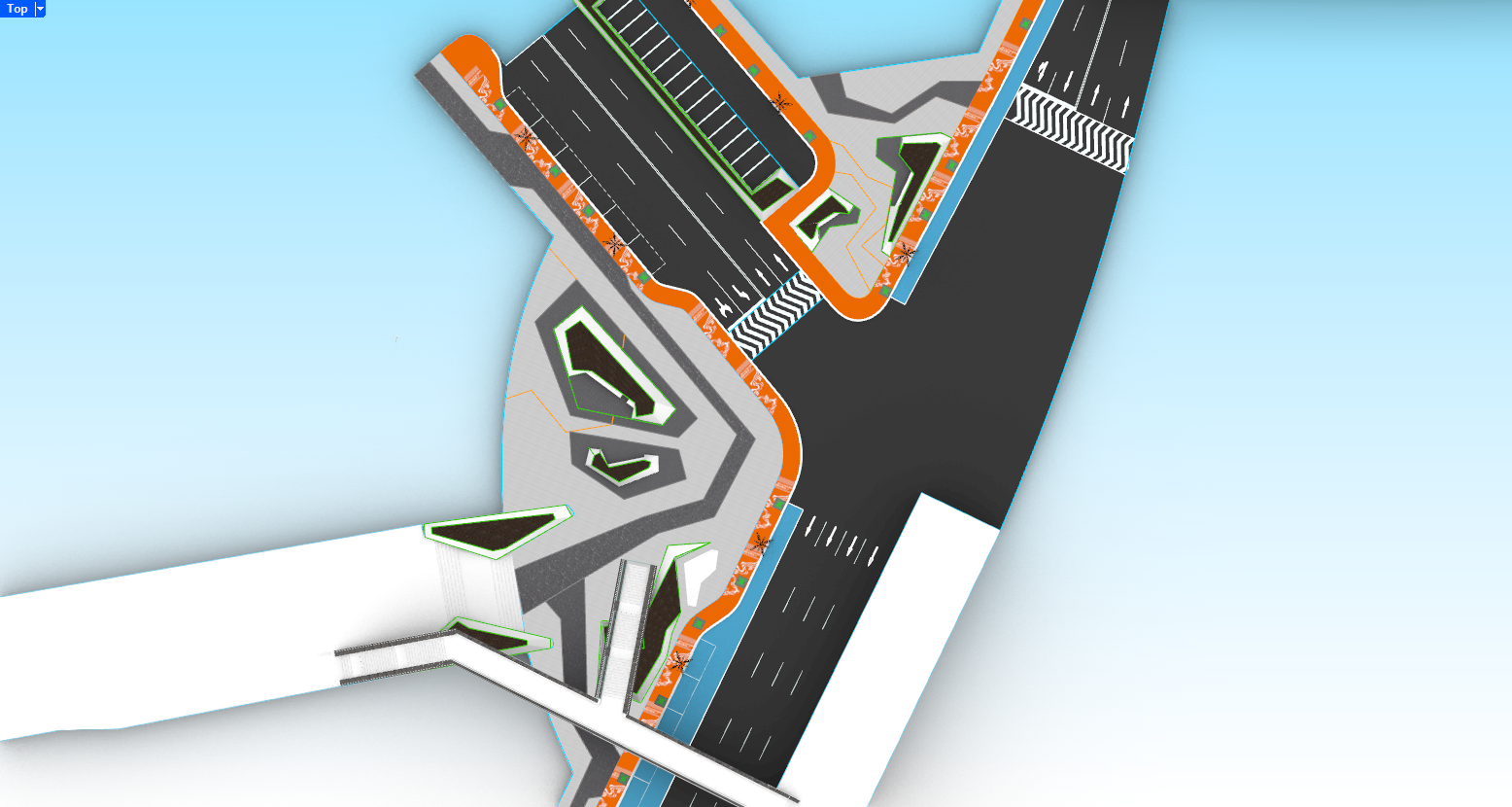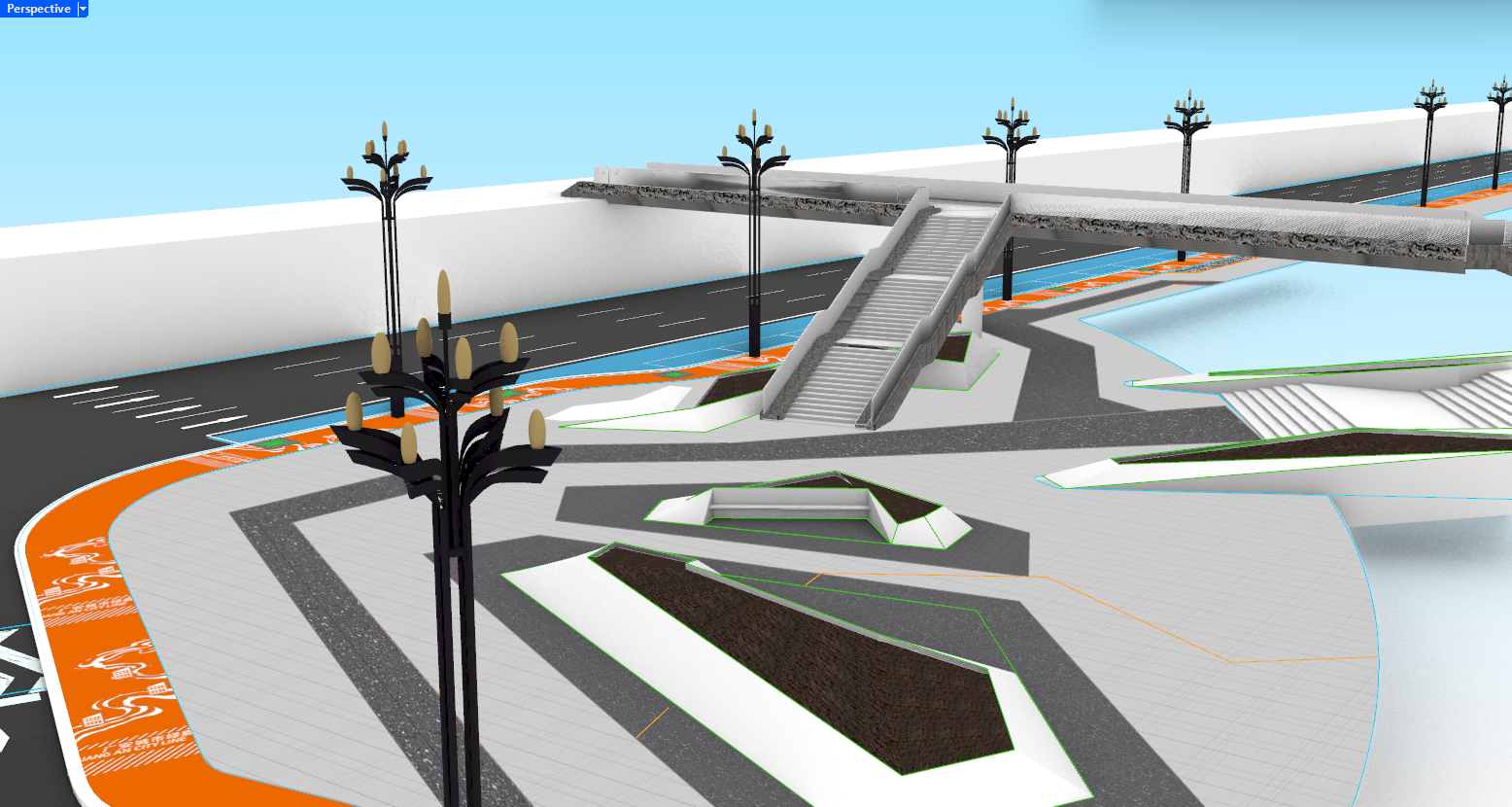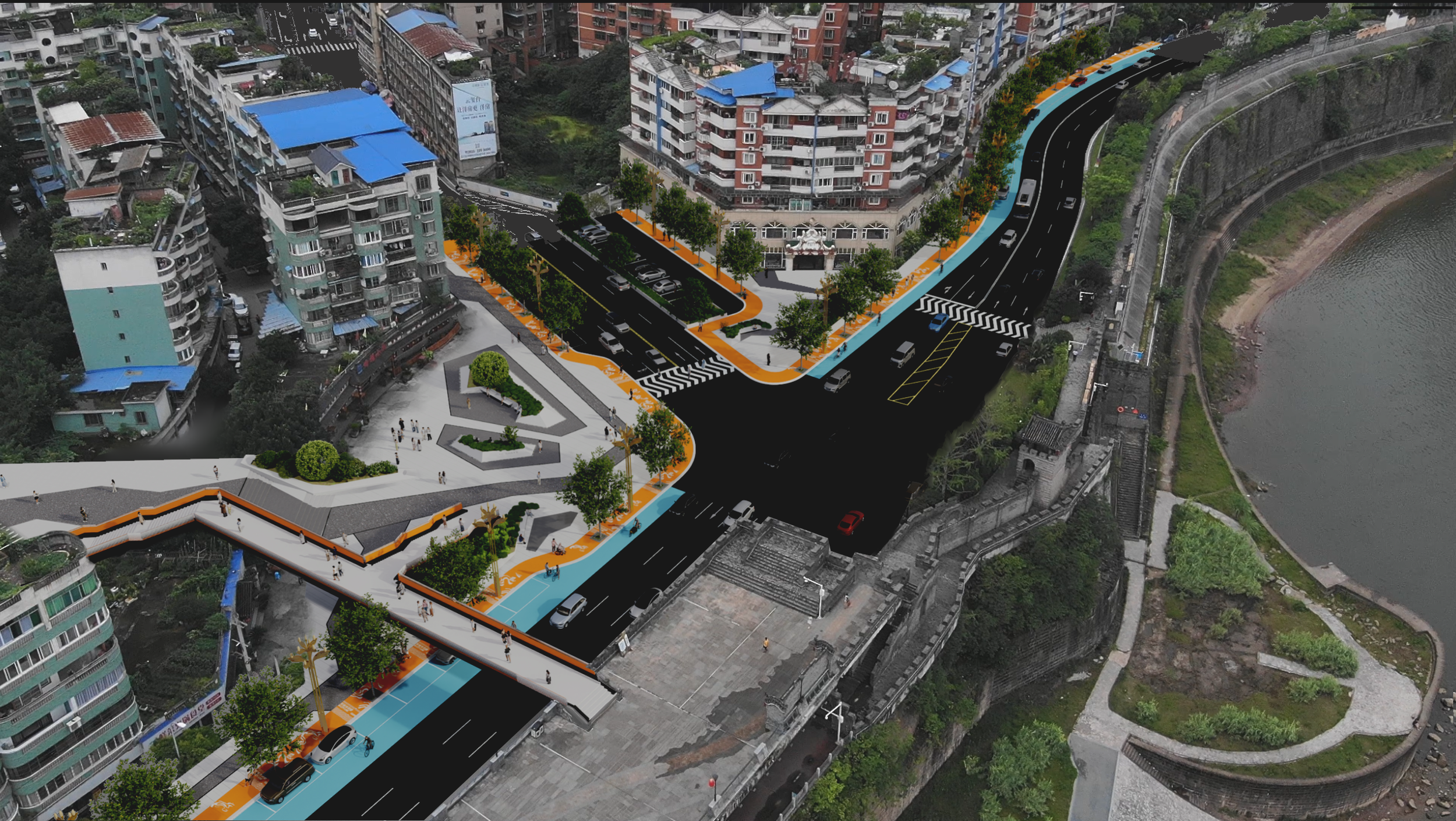Binjiang Road
This is a project I finsihed during my internship in summer 2024, at Sichuan Provincial Architectural Design and Research Institute Co. Ltd(SADI). Special thanks to the contructural team and propose team.
Location & Background
Located in Guang’an, near Chengdu in Sichuan Province, China, this project site sits along a scenic stretch of the Qu River. It holds historical significance, thanks to its proximity to an ancient city wall, and also serves as a key junction between downtown Guang’an and a popular sports stadium. Despite its prime location, the area suffered from disorganized traffic flow, limited pedestrian access, and a lack of appealing public space. These issues prevented both residents and visitors from fully appreciating the rich heritage and riverfront views.
Project Motivation
Because of the area’s congestion, safety concerns, and unused potential, the local government collaborated with planners and designers to undertake a renovation. The goal was to preserve cultural landmarks while reimagining the intersection and surrounding streets as user‐friendly public spaces. The old city wall, which is a beloved reminder of Guang’an’s history, became central to the redesign, ensuring it remained accessible and prominent.
Due to the area’s congestion, safety concerns, and underutilized potential, the local government joined forces with urban planners and designers to initiate a comprehensive renovation. Not only did they want to resolve immediate traffic problems and improve walkability, but they also saw a chance to amplify Guang’an’s cultural and economic strengths. The historic city wall, a beloved symbol of the region’s heritage, stands right alongside the busy intersection, yet it was easily overlooked amid the chaos. Meanwhile, the waterfront’s picturesque views of the Qu River and the proximity to a popular stadium offered promising opportunities for tourism and public engagement. By redesigning streets, creating pedestrian‐friendly spaces, and strategically incorporating this local history, the project aimed to revitalize the area into a vibrant urban destination—one that could serve as a source of pride for residents and an inviting attraction for visitors.
My Role in the Renovation
I was specifically in charge of designing this key node of the Binjiang Road project, while other team members took responsibility for separate segments along the waterfront. My process included drafting the existing conditions and proposed features in CAD, then exporting those plans into Rhino to create a detailed 3D model. Afterward, I used D5 rendering software to produce realistic visualizations of how the new layout would look. Finally, I used Photoshop to merge the rendered design with photographs of the current site, creating convincing “before‐and‐after” images. I was also responsible for presenting our design concept, helping stakeholders visualize how the area could be revitalized.
Disclaimer: The work below does not represent entirely my creative capacity, to make the project be selected and to be in the construction phase, this proposed design has been compromised multiple times according to the government offcials’ feedbacks.
Urban Architectural Design, 2024.
Outcomes & Next Steps
The solution we proposed reorganizes roadways and sidewalks, introduces new landscaping, and creates an elevated walkway that integrates the historic city wall with modern streetscapes. By placing pedestrians at the forefront of the design, the plan ensures a safer, more enjoyable environment for both locals and visitors. In August 2024, our project received official approval, and construction is set to begin in 2025—paving the way for this once‐chaotic intersection to become a welcoming, culturally rich urban gateway for Guang’an.
Disclaimer: All design details are subject to adjustment during the final construction phase, in which I will no longer be involved.



